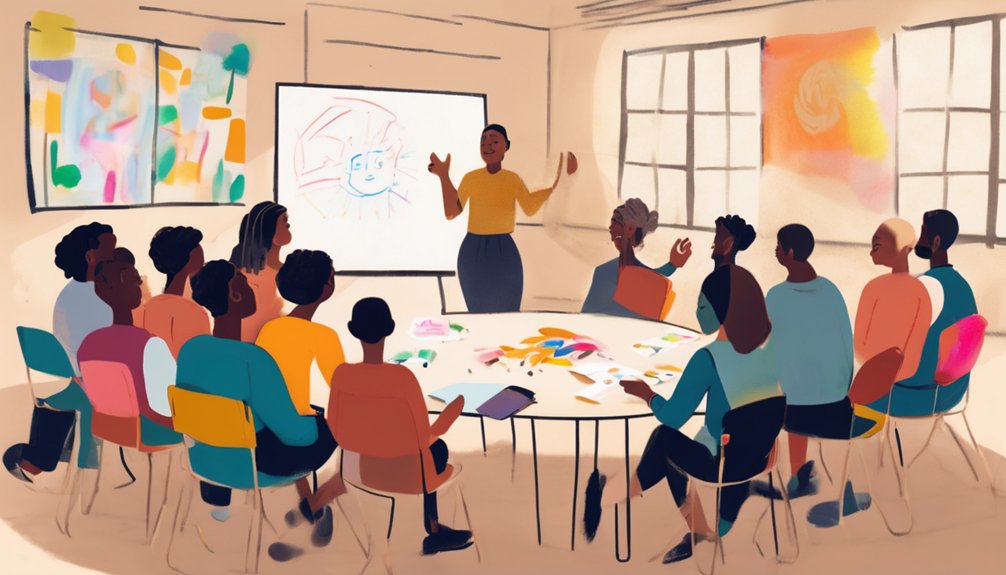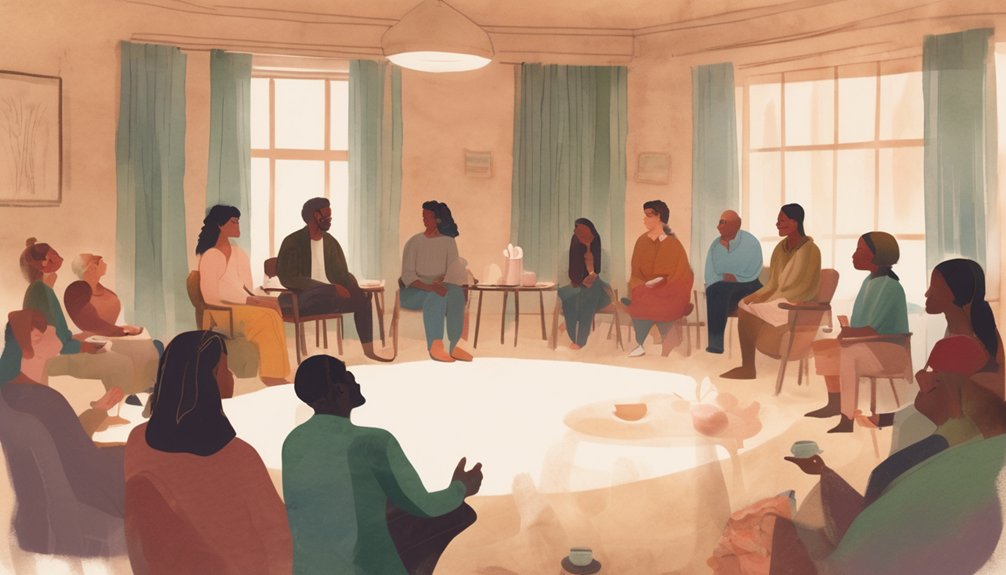Pronouns in Trans Practice: Gentle Corrections, Scripts, and Boundary-Setting


Table of Contents
ToggleSteering through the landscape of pronouns can feel like walking a tightrope, balancing respect and understanding. It’s crucial to recognize the power of gentle corrections when misgendering occurs. By using scripts, you can create an inviting atmosphere for sharing pronouns. Setting clear boundaries is similarly significant, as it educates others on the meaning of these identities. How can we collectively foster a community that accepts sensitivity and accountability? The answers might surprise you.
When you misgender someone, it can be uncomfortable for both parties, but gentle corrections play a crucial role in creating a more respectful environment. By practicing gentle corrections in pronoun usage, you help minimize discomfort for the person affected. A brief self-correction acknowledges the mistake without putting them on the spot. This practice shows accountability and reinforces the importance of using correct pronouns. Furthermore, when peers support each other in correcting misgendering, it lessens the emotional labor placed on the misgendered individual, fostering inclusivity. Regularly practicing these gentle corrections builds a culture of respect and understanding around gender identity, ultimately decreasing instances of misgendering in social and educational settings. Everyone deserves to be addressed with respect and dignity.

Utilizing scripts for respectful conversations can greatly ease the anxiety many people feel when discussing pronouns. By having structured responses ready, you can introduce yourself with a simple, “Hi, I’m [Name], and my pronouns are [pronouns].” This not only helps you share your pronouns but encourages others to do the same, fostering an inclusive environment. Practice these scripts in a safe space with friends or family to build confidence. When corrections are needed, phrases like, “I apologize for using the wrong pronoun; I’ll remember to use [correct pronoun] moving forward,” allow for gentle corrections without making a big deal of the mistake. By promoting mutual respect, you can create a culture where everyone feels valued and heard.

Creating a respectful atmosphere around pronouns naturally leads to the need for clear boundaries regarding personal preferences. To foster inclusivity and understanding, consider these practices:
While it might feel uncomfortable at the outset, holding each other accountable for pronoun usage is vital in fostering an inclusive environment. It’s significant to respect everyone’s gender identity by actively correcting ourselves and others when misgendering occurs. Gentle corrections can alleviate the emotional burden for trans people and promote understanding. Establishing community guidelines that encourage sharing pronouns helps create a culture of openness, where individuals feel safe to express their identities and correct misgendering without fear. By modeling humility and acknowledging mistakes, you can inspire a growth mindset in others. Incorporating regular pronoun sharing in group settings normalizes this practice and reduces assumptions about gender identity, ultimately fostering a supportive and inclusive community.
Building on the importance of accountability in pronoun usage, encouraging sensitivity and support within the community is likewise crucial. By actively acknowledging and using people’s correct pronouns, you help create an inclusive environment that respects their gender identity. Here are some ways to foster this sensitivity:
These practices reduce emotional labor for individuals affected and promote a respectful and accountable community, ultimately making everyone feel valued and understood.
The proper pronoun for a trans person is based on their pronoun preference, which reflects their gender identity. Respectful communication is essential, as using the correct pronouns offers personal validation and affirms their identity. Language evolves, and so does our understanding of gender, influencing social acceptance. By practicing inclusivity and asking for pronouns, you contribute to a supportive environment that recognizes the cultural significance and emotional impact of identity affirmation.
If you refuse to use someone’s gender pronouns, you risk significant pronoun resistance consequences. This behavior can lead to identity validation impacts, emotional distress factors, and a breakdown in communication. Social dynamics shift negatively, affecting workplace inclusivity and personal growth challenges. You might also face legal implications in certain jurisdictions. Understanding the importance of community support and cultural awareness can foster a more inclusive environment, enhancing relationships and promoting mutual respect.
Using ze/zir instead of they/them can improve personal identity expression and provide comfort for those who identify with these pronouns. Ze/zir benefits include promoting pronoun diversity and fostering inclusive language, which acknowledges the evolution of gender expression. Embracing these terms supports community understanding and cultural perspectives, making environments more welcoming. By prioritizing pronoun education, you contribute to a culture of respect and affirmation, strengthening community support for all gender identities.
Using pronouns is like creating a bridge of understanding between you and others. To show respect for everyone’s gender identity, always ask for and use the correct pronouns. Welcome inclusive communication and be aware that language evolves; what might seem like a personal preference is essential for identity affirmation. If you misgender someone, a simple apology followed by correction fosters community support and cultural sensitivity, ensuring everyone feels valued and understood.
By embracing gentle corrections, you create understanding. By utilizing scripts, you foster confidence. By setting boundaries, you educate others. Together, these practices cultivate an environment where everyone feels respected and valid. When you commit to accountability, you strengthen community ties. When you encourage sensitivity, you uplift each individual’s identity. Let’s work together to guarantee that everyone’s pronouns are honored, creating a supportive space that celebrates diversity and promotes inclusivity for all.
 Featured PostsOctober 25, 2025Fleeing Home: The Reality Behind Transgender Americans’ Search for Safety
Featured PostsOctober 25, 2025Fleeing Home: The Reality Behind Transgender Americans’ Search for Safety Fashion and ExpressionOctober 25, 2025First Time With Lip Filler? Here’s What to Expect
Fashion and ExpressionOctober 25, 2025First Time With Lip Filler? Here’s What to Expect Featured PostsOctober 24, 2025After Facial Feminization Surgery: A Guide to Recovery and Beyond
Featured PostsOctober 24, 2025After Facial Feminization Surgery: A Guide to Recovery and Beyond Activism and ChangeOctober 24, 2025From Policy to Practice: HR's Role in Supporting Trans Employees
Activism and ChangeOctober 24, 2025From Policy to Practice: HR's Role in Supporting Trans Employees